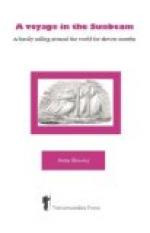Mr. Ellis, in his ‘Polynesian Researches,’ states that ’these stones are finely polished, highly valued, and carefully preserved, being always oiled or wrapped up in native cloth after having been used. The people are, if possible, more fond of this game than of the pahe, and the inhabitants of a district not unfrequently challenge the people of the whole island, or the natives of one island those of all the others, to bring a man who shall try his skill with some favourite player of their own district or island. On such occasions seven or eight thousand people, men and women, with their chiefs and chiefesses, assemble to witness the sport, which, as well as the pahe, is often continued for hours together.’
With bows and arrows they are as clever as all savages, and wonderfully good shots, attempting many wonderful feats. They are swift as deer, when they choose, though somewhat lazy and indolent. All the kings and chiefs have been special adepts in the invigorating pastime of surf-swimming, and the present king’s sisters are considered first-rate hands at it. The performers begin by swimming out into the bay, and diving under the huge Pacific rollers, pushing their surf-boards—flat pieces of wood, about four feet long by two wide, pointed at each end—edgewise before them. For the return journey they select a large wave; and then, either sitting, kneeling, or standing on their boards, rush in shorewards with the speed of a racehorse, on the curling crest of the monster, enveloped in foarn and spray, and holding on, as it were, by the milk-white manes of their furious coursers. It looked a most enjoyable amusement, and I should think that, to a powerful swimmer, with plenty of pluck, the feat is not difficult of accomplishment. The natives here are almost amphibious. They played all sorts of tricks in the water, some of the performers being quite tiny boys. Four strong rowers took a whale-boat out into the worst surf, and then, steering her by means of a large oar, brought her safely back to the shore on the top of a huge wave.




